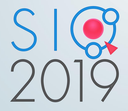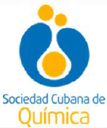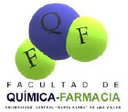Executive Secretary

VII Simposio Internacional de Química 2019
SIQ 2019
This work presents a composite for doxorubicin photodelivery, using near infrared light as external impulse. Copper sulfide nanoparticles (CuSNPs) covered with human serum albumin (HSA) have been used as drug carrier-deliverer. CuSNPs covered with sodium dodecylbencenesulfonate (SDBS) were synthetized by a hydrothermal method (TEM: 12 ± 5 nm; DLS:16 ± 3 nm). After, a ligand exchange with dopamine (DOP) was carried out (CuSNPs@DOP). The CuSNPs@DOP (DLS: 50 ± 10 nm) were set to interact with an excess of HSA and to obtain a CuSNPs@HSA composite. The amount of HSA present on the CuSNPs@HSA system was determined by measuring the amount of protein in the supernatants. Bradford assay and SDS-PAGE electrophoresis were used with that purpose and a 62.5 % of HSA was determined in the as-obtained CuSNPs@HSA nanocomposite. The CuSNPs@HSA (DLS: 70 ± 20 nm), were set to interact with an excess of doxorubicin, a well-known cytostatic, obtaining a 27.8 % (w/w) of DOX loaded onto the CuSNPs@HSA@DOX composite. The drug delivering efficacy of the CuSNPs@HSA@DOX and its in-vitro effect on cancer cells, were evaluated by irradiation with an 808 nm laser (0.2 w/cm2). A 35 % of the loaded drug was delivered after 2 hours of irradiation, while a 60 % of cellular death was observed after 80 min of laser irradiation. The efficient loading and delivery capacity of the obtained CuSNPs covered with albumin and its therapeutic action over HeLa cells after NIR irradiation, makes of it an excellent candidate for selective treatments against cancer.
This work presents a composite for doxorubicin photodelivery, using near infrared light as external impulse. Copper sulfide nanoparticles (CuSNPs) covered with human serum albumin (HSA) have been used as drug carrier-deliverer. CuSNPs covered with sodium dodecylbencenesulfonate (SDBS) were synthetized by a hydrothermal method (TEM: 12 ± 5 nm; DLS:16 ± 3 nm). After, a ligand exchange with dopamine (DOP) was carried out (CuSNPs@DOP). The CuSNPs@DOP (DLS: 50 ± 10 nm) were set to interact with an excess of HSA and to obtain a CuSNPs@HSA composite. The amount of HSA present on the CuSNPs@HSA system was determined by measuring the amount of protein in the supernatants. Bradford assay and SDS-PAGE electrophoresis were used with that purpose and a 62.5 % of HSA was determined in the as-obtained CuSNPs@HSA nanocomposite. The CuSNPs@HSA (DLS: 70 ± 20 nm), were set to interact with an excess of doxorubicin, a well-known cytostatic, obtaining a 27.8 % (w/w) of DOX loaded onto the CuSNPs@HSA@DOX composite. The drug delivering efficacy of the CuSNPs@HSA@DOX and its in-vitro effect on cancer cells, were evaluated by irradiation with an 808 nm laser (0.2 w/cm2). A 35 % of the loaded drug was delivered after 2 hours of irradiation, while a 60 % of cellular death was observed after 80 min of laser irradiation. The efficient loading and delivery capacity of the obtained CuSNPs covered with albumin and its therapeutic action over HeLa cells after NIR irradiation, makes of it an excellent candidate for selective treatments against cancer.
Sobre el ponente

MsC. Claudia Iriarte Mesa






